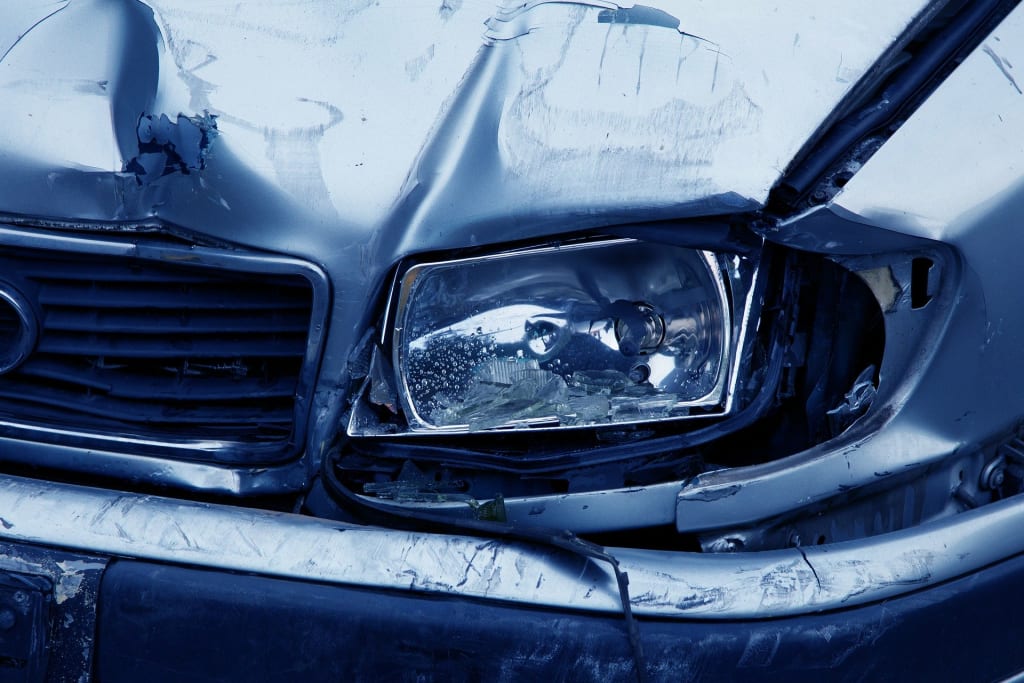Five Myths about Traffic Safety
72 percent of U.S. drivers consider themselves above average.

tA recent survey of U.S. drivers found – not unsurprisingly – that 72 percent of them consider themselves to be above-average drivers. Only 18 percent self-classified as average drivers and a sheepish – or brutally honest – 9 percent admitted they were below average.
The brutal honesty, however, is reserved for the U.S. as a whole because according to a global report from the World Health Organization — which reviewed laws and crashes in 175 nations — the U.S.'s traffic fatality rate is 12.4 deaths per 100,000 — or about 50 percent higher than similar nations in Western Europe, plus Canada, Australia and Japan.
In what country are you in the most peril when you’re driving your bulky SUV? Libya. At a rate of 73.4 deaths per 10000 people, Libya by far has the highest incidence of car accidents anywhere in the world.
One possible reason why Americans have an inflated sense of their driving skill is a lack of understanding of the key dangers with traffic safety.
With that premise, we will be exploring five myths about traffic safety. After reading this article, I can promise that at least half of you will proclaim, “He doesn’t know what he’s talking about. That can’t be right.”
To me, that is a perfectly acceptable reaction. Because that was my initial response when I researched the myths.
All I ask is that after you read this article, your anger does not unleash a torrent of road rage upon me. There are already enough people on the New Jersey Turnpike trying to send me into the guardrail.
Myth # 1: Side Roads are much safer than highways
There are plenty of drivers so afraid of highways and their five or six lanes in each direction that they avoid these asphalt behemoths entirely and drive exclusively on side roads because they believe they are much safer.
After all, one lane each way. What could be simpler? And safer.
Last year, 56 percent of the nation's traffic fatalities occurred in rural areas. Yet rural America has just 23 percent of the nation's population. In some states, more than 90 percent of highway deaths occur on rural roads.
The grim statistics provided by the National Highway Traffic Safety Administration also show that drivers on rural roads die at a rate 2.5 times higher per mile traveled than on urban highways. Urban drivers travel twice as many miles but suffer close to half the fatal accidents.
This may seem counterintuitive, but highway safety officials and activists have plenty of explanations. People driving rural roads tend to drive faster. They drive without seat belts at higher rates. More of them drive and die drunk. When they're injured in accidents, they may not get timely emergency medical care given the remoteness of many rural roads. And, deer, elk, moose and other wild animals are more likely to dart out into traffic on rural roads.
Undivided high speed (i.e., above 45 mph) roads are the most dangerous kinds of roads frequently found in the United States; they have the highest fatality rates because they are diametric to best practices. Hurling two vehicles at each other and expecting them to pass each other with inches to spare without any kind of barrier whatsoever would sound like a bad idea to anyone in theory, yet this is precisely what these roads are in practice. Best practices indicate avoiding such roads if they have speed limits above 43 mph. Because speed limits in the US are based in 5 mph increments, this means avoiding undivided roads with speed limits above 40 mph whenever possible, especially if there’s only one available lane in each direction.
Some experts note that the outdated design and layout of many rural highways are also factors. Driving errors that are manageable on urban roads become deadly on rural highways.
Myth # 2: The right (slow) lane is the safest lane on a highway
Now this one just doesn’t feel right. That right lane is for the slow and careful drivers who made their vehicular business while speed demons and crazies zip along at 80 or 90 MPH in the left or fast lane.
But according to the National Highway Traffic Safety Administration, in 2018 the safest lane to drive – based on the number of car accidents – is the far left lane, the fast lane. The lane with the most accidents was the far right lane with 40 percent of the car accidents; second was the middle with about 38 percent and third was the far left lane with 22 percent of car accidents.
Why would the right lane be the most dangerous?
You guessed it. It’s the merging lane onto a highway and merging on any road is inherently dangerous. Merging is not for the faint of heart, which is why the right lane has the highest rate of accidents. People exiting and entering the highway merge and can cause accidents.
Myth # 3: The most common crash involves two or more vehicles
Ask any driver what is one of their greatest traffic fears and they’ll invariably say, “being hit by another vehicle.”
You may want to find another traffic nightmare because the vehicle you have the most to fear from is – yes, you guessed correctly – the vehicle you are driving.
A single-vehicle collision or single-vehicle accident is a type of road traffic collision in which only one vehicle is involved. Included in this category are run-off-road collisions, collisions with fallen rocks or debris in the road, rollover crashes within the roadway, and collisions with animals.
Typical factors contributing to single-vehicle collisions include excessive speed, driver fatigue and driving under the influence of alcohol or other drugs and, of course, distracted driving. In the last five years, drivers who have driven off the road because they were looking at their phone has become a major cause of single-vehicle collisions. Environmental and roadway factors such as bad weather, poor drainage, narrow lanes and shoulders, insufficient curve banking and sharp curves all contribute to single-vehicle crashes.
Sadly, single-vehicle crashes have become more prevalent due to a tragic trend in recent years – the increase in the suicide rate. Recent crash data reveals that suicide by crashing a vehicle into an object off the road has shown a disturbing increase.
So what vehicle is the most dangerous on the road? Cue the Chevrolet Corvette. So the next time you drive near a 60-year-old white male with a receding hairline in a Corvette driving 15 miles below the speed limit, safely put distance between your vehicle and that Corvette.
Myth # 4: Older drivers cause more accidents and are not as safe as younger drivers
Here’s the mantra of young and middle-age drivers: Older people don’t get into a lot of accidents but they cause them. New research from Swansea University challenges the idea that older people are dangerous drivers. Analysis of data on vehicle accidents showed that drivers aged 70 are involved in three to four times fewer accidents than 17 to 21-year old males and that they cause far fewer accidents than younger drivers, including middle-age drivers.
With baby boomers hitting their golden years, the elderly population is growing and the proportion of drivers in that population is expanding rapidly as well. The percentage of persons age 65 and older who are licensed drivers has increased from 61 percent in 1980 to 72 percent in 1990 and 84 percent in 2017. In 2029, when the last of the boomers turn 65, one in four drivers will be older than 65. That is a scary proposition for many younger drivers who dread being stuck behind an older driver who is cruising along at 15 miles below the posted speed limit.
After middle age, the number of drivers involved in fatal crashes decreases as the age of the driver increases. Over 7,000 drivers age 55 to 64 were involved in fatal crashes in 2017. This number drops to 2,316 for 65- to 69-year-old drivers and continues to drop with each successive age group.
As a group, women drivers are safer drivers than men at all age ranges.
Myth # 5: States with the most traffic have the highest fatality rates
Finally, it seems logical that the states with the most traffic and the most crowded highways should be the most dangerous. In fact, the opposite seems to be true. The states with the most rural roads, least amount of traffic and the highest speed limits are the most dangerous.
Mississippi and Louisiana are two of the most dangerous states in which to drive. Montana and Wyoming with low population density, plenty of rural roads and high speed limits also have high accident rates.
Massachusetts is statistically the safest drive in which to drive followed by Rhode Island, Minnesota, the District of Columbia, New York and New Jersey where flipping other drivers the “bird” seems more prevalent thankfully than fatal accidents.
Drivers beware
So what are the most disturbing trends in auto safety today?
First, after the fatal accident rate has fallen since 1970 for more than 40 years due to seat belts and safety technology innovations, that number is starting to creep back up with many pundits blaming distracted driving for that increase.
Second, an estimated 6,227 pedestrians were killed in 2018, an increase of 250 from 2017, according to the Governors Highway Safety Association. Pedestrian fatalities in the U.S. have increased 41 percent since 2008 and now account for 16 percent of all traffic fatalities, the association says
Third, while road rage statistics are notoriously sketchy, The 2018 AAA Traffic Safety Culture Index revealed 39 percent of drivers think road rage is a “much bigger problem” now than in the past.
Finally, new driver assistance technologies hold the potential to reduce the number of crashes and save thousands of lives a year. However, human error remains the number one cause of auto accidents. Traffic experts and insurance companies consistently lobby for stricter licensing requirements, greater government investment in road infrastructure and safer vehicles with the latest technology deployed in most, if not all, vehicles sold in the country.
For more articles about health, safety and fitness, check out Health News in Five Minutes.
*******************************************************************
About the Creator
Frank Racioppi
I am a South Jersey-based author who is a writer for the Ear Worthy publication, which appears on Vocal, Substack, Medium, Blogger, Tumblr, and social media. Ear Worthy offers daily podcast reviews, recommendations, and articles.






Comments
There are no comments for this story
Be the first to respond and start the conversation.